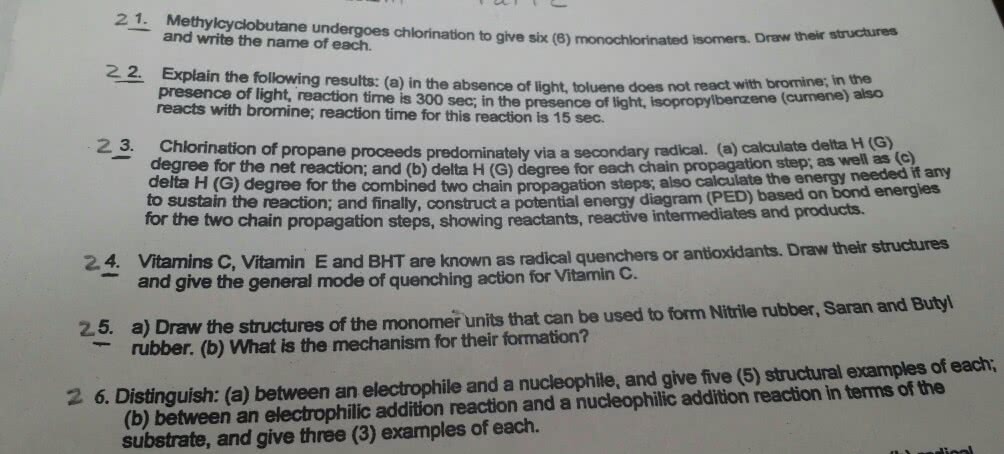CHEM 2323 Chapter 4: Ch 4 study guide - free radical halogenation and stability of intermediates-1
Document Summary
Chapter 4 free-radical halogenation reaction and stability of intermediates. The free radical halogenations reaction is basically a 3 step reaction that places a halogen group on an alkane chain with a radical formed as an intermediate. There are 3 types of steps in the free-radical halogenations reaction: the initiation step, propagation steps, and termination steps. It is important to know each step of the reaction, as well as the differences between the initiation step, propagation, and termination. This reaction usually occurs with chloride or bromide gas. Fluorine is very reactive and it becomes potentially explosive in laboratory settings, and iodine is very unreactive that it takes years before it actually reacts. Know the entire mechanism of the reaction!!: step 1: initiation: in the initiation step, a chloride gas or bromide gas is reacted with light, and forms 2 radicals. (halogen is reacted to form radical halogens).





